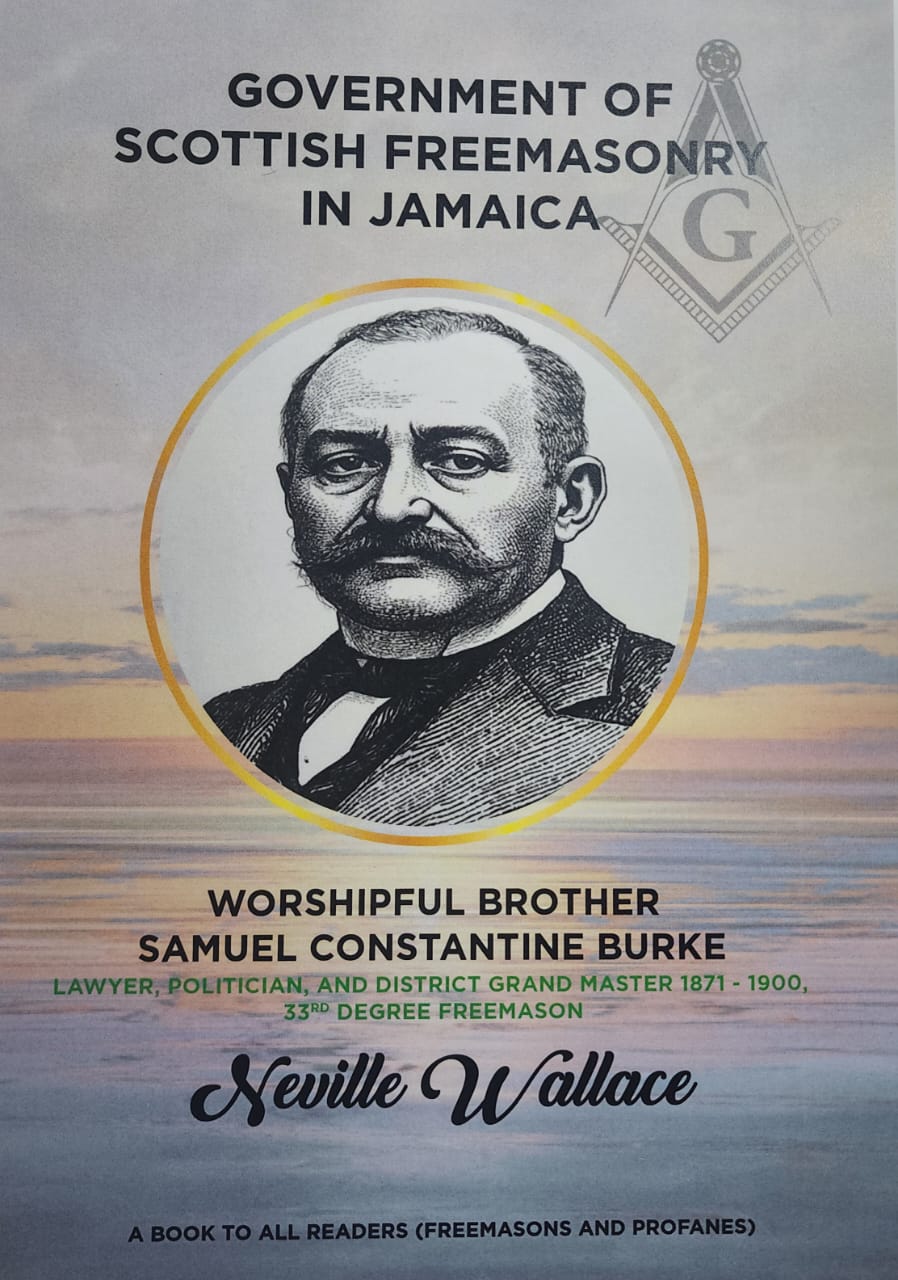
Scottish Freemasonry in Jamaica Under the Government of Worshipful Brother Samuel Constantine Burke
This book explores the history of Scottish Freemasonry in Jamaica following the abolition of slavery in 1838. It details the re-establishment, survival of The Glenlyon Lodge and its role in the evolving of other Lodges, and the contributions of Worshipful Brother Samuel Constantine Burke.
by Neville Wallace
Overview
On the formal ending of the enslavement system in 1838, a new era appeared to have dawned for Scottish Freemasonry in Jamaica between the years 1843 to 1845, certain Brethren residing in St Thomas-in-the-Vale (now Linstead) became desirous of practicing once more the ancient mysteries, and thereupon applied to the Grand Lodge of Scotland for a warrant to constitute the “Elgin Lodge No. 415” of that Parish. Scarcely had the application been considered ere certain Brethren in Kingston applied to the same authority for a warrant to establish “The Glenlyon Lodge”. Brethren in St. Elizabeth sought for a warrant for the “Union Lodge No. 359” at Black River, others at Falmouth for a warrant for the “Athol Union No. 367” of that Town, at Spanish Town for a warrant for the “Victoria Lodge No. 402” and St. Andrew for a warrant for its own “Kilwinning Lodge No. 369”. The Founders of these Lodges probably thought it necessary to offer some level of diversity, cultural change and opportunities for the now free men to become members of the fraternity by reintroducing Scottish Freemasonry. The Post-Emancipation period saw Africans moving from the plantations to their own lands and economic independence. African...show more
Purchase a Copy
Banking Information:
Account Name: The Glenlyon Foundation Ltd
Bank: Sagicor Bank
Branch Name: Hope Road
Account Number: 5502746218
Account Type: Chequing

About the Author
Neville Wallace is a distinguished Masonic author with over fifteen (15) years of experience in Freemasonry.
Learn more about the author →